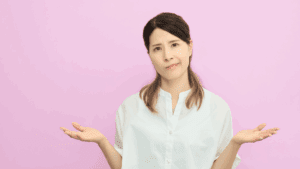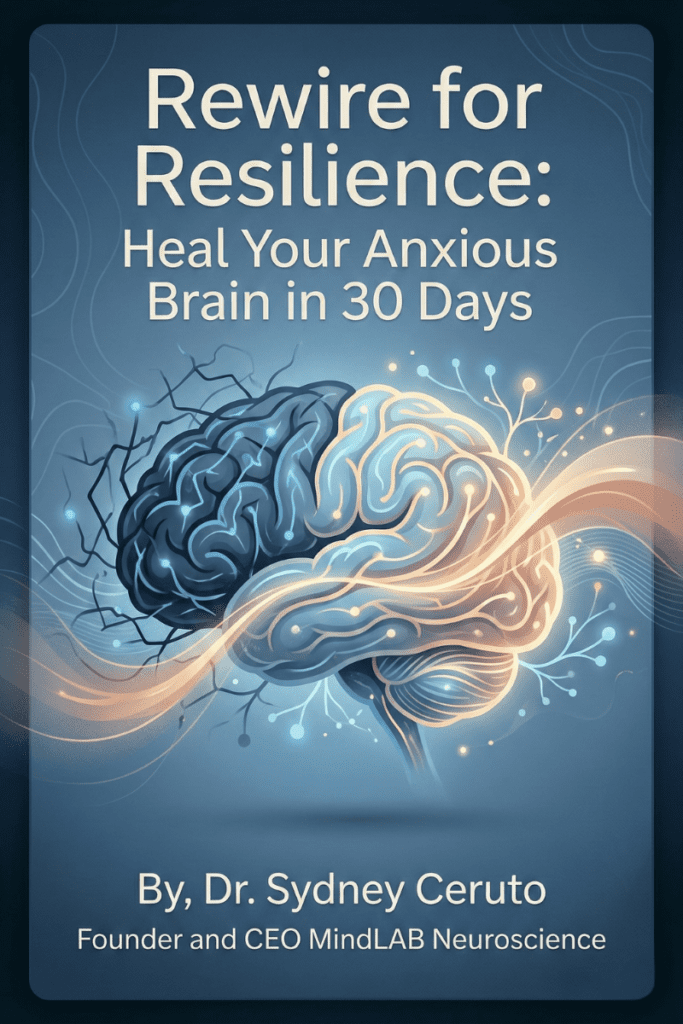The neuroscience of trusting your decisions reveals that clarity and self-trust are not mystical qualities reserved for a select few, but rather qualities that can be developed through self-awareness and introspection. They are biological processes, rooted in neural circuits that evolved to keep us alive. Suppose you’ve ever felt paralyzed by indecision, second-guessed every choice, or trusted others more than yourself. In that case, your brain is simply running patterns that once ensured survival but now sabotage clarity. By understanding and working with these systems, you can train your brain to move from doubt to certainty, from hesitation to confident action.
The neuroscience of trusting your decisions reveals that self-doubt is not weakness but a misfiring of ancient survival circuits that can be rewired for clarity.
Why the Brain Struggles with Self-Trust
The human brain is biased toward survival. From an evolutionary standpoint, hesitation was an adaptive trait. Our ancestors lived in environments where choosing the wrong shelter, trusting the wrong ally, or eating the wrong food could mean death. Caution was rewarded. This ancient circuitry still drives our choices today, even though modern decisions rarely carry life-or-death consequences.
The amygdala, your brain’s alarm center, is designed to amplify potential dangers. This region floods your body with signals of anxiety, often overriding the calmer reasoning of the prefrontal cortex, the part of your brain responsible for planning, logic, and aligning choices with long-term goals. When you feel indecisive, it’s not because you lack intelligence. It’s because your amygdala is drowning out the quieter voice of your rational brain.
The neuroscience of trusting your decisions teaches us that self-trust is the ability to bring these systems into balance. You do not silence the amygdala, but you learn to calm it so that the prefrontal cortex can guide you with clarity.
The Neural Circuitry of Decision-Making

Every decision you make is the result of a conversation between several brain regions; the neuroscience of trusting your decisions happens in the following areas:
- Prefrontal Cortex (PFC): Plans, organizes, and aligns choices with values and goals.
- Amygdala: Scans for danger, often exaggerating risks.
- Anterior Cingulate Cortex (ACC): Acts as the brain’s “conflict monitor,” lighting up when two options feel equally weighted.
- Striatum: Reinforces decisions through the experience of reward and satisfaction.
- Insula: Processes bodily sensations, often amplifying the physical experience of doubt.
Modern research in the neuroscience of decision-making shows that when the prefrontal cortex and amygdala are balanced, confidence replaces hesitation.
By understanding the neuroscience and role of different brain regions—from the amygdala’s alarms to the prefrontal cortex’s reasoning—you can see why doubt arises and how clarity can be trained. When these regions are integrated, decisions feel transparent and authentic. When they are misaligned, you feel torn, conflicted, or unable to make a commitment.
The neuroscience of trusting your decisions is not about eliminating conflict but about strengthening the integration between emotional and rational systems so that your brain works in coherence.
Dopamine and the Feeling of “Rightness”
Dopamine is central to the neuroscience of trusting your decisions because it underlies the brain’s sense of anticipation, motivation, and validation. Contrary to the myth that dopamine is simply the “pleasure chemical,” neuroscience shows it functions as the prediction molecule. It encodes what researchers refer to as the reward prediction error. When an outcome is better than expected, dopamine surges, reinforcing the behavior and strengthening confidence. When it is worse, dopamine levels drop, signaling the brain to revise its strategies for the future.
This prediction system is why a choice aligned with your authentic values produces a felt sense of “rightness.” This brain chemical is intricately linked to the proverbial question of “the neuroscience of trusting your decisions?”Your dopamine network rewards coherence between what you do and who you are. This alignment fosters resilience because your brain learns to associate authenticity with safety and satisfaction.
But dopamine is also vulnerable to hijacking. When the brain becomes conditioned to release dopamine in response to external cues—praise, money, approval, or avoidance of criticism—you experience temporary relief. Still, it comes at the cost of long-term self-trust. Over time, your brain becomes accustomed to prioritizing others’ expectations over your own internal compass, eroding clarity and fueling cycles of self-doubt.
The neuroscience of trusting your decisions emphasizes the importance of retraining your dopamine system. This means consciously rewarding yourself for decisions that reflect your values, even when they are small or unnoticed by others. By doing so, you strengthen intrinsic motivation, allowing dopamine to fire in alignment with authenticity rather than conformity. Over time, this creates a brain that celebrates self-trust, reduces fear of mistakes, and builds momentum toward greater confidence.
Dopamine is not just about making you feel good in the moment—it is about teaching your brain what to repeat. When you train it to fire in response to self-trust, you make trusting your decisions not only easier but inevitable.
Evolutionary Roots of Indecision

Indecision is not a weakness—it is a survival mechanism deeply embedded in our biology. Our ancestors who hesitated before making critical choices often had better odds of survival than those who acted impulsively. The ability to mentally simulate different scenarios gave humans a decisive evolutionary advantage. It allowed early humans to consider multiple outcomes before committing, conserving energy, and avoiding unnecessary risks.
But in the modern world, where decisions are rarely life-or-death, this same circuitry becomes maladaptive. Your amygdala still fires as though choosing between jobs or relationships is equivalent to choosing between life and death, or survival and extinction. This mismatch is what paralyzes so many of us in everyday life.
Anthropologically, indecision was also shaped by the need for tribal survival. In small communities, a single poor choice could endanger everyone, while those who paused or relied on finely honed intuition protected the group. This dual legacy explains why we oscillate between hesitation and instinct today.
The neuroscience of trusting your decisions reframes hesitation as an evolutionary echo rather than a personal failing. Recognizing this allows you to stop shaming yourself for indecision and instead focus on updating your brain for the modern environment, where many decisions are safe opportunities for growth rather than existential threats.
The Psychology of Self-Doubt
Psychology reveals why some individuals are more vulnerable to decision paralysis than others. Self-doubt often originates in early life when external authority figures overrode your internal cues. If your feelings were dismissed, or mistakes were punished harshly, your brain encoded a lesson: “My judgments are unreliable.” Over time, neuroplasticity reinforced this belief, creating circuits of hesitation that persist into adulthood.
This psychological conditioning becomes a self-fulfilling loop. Each avoided decision strengthens the neural pathways of mistrust, making it harder to break free. Yet, the exact mechanism that creates self-doubt can also unmake it. Neuroplasticity is the brain’s gift: every time you honor even a small choice, you lay down new connections that favor trust.
The neuroscience of trusting your decisions teaches us that change does not come from grand gestures but from repeated micro-moments of self-validation. Choosing what to eat without endless deliberation, selecting a path and following through, or standing by a decision even when others disagree—these small acts gradually build neural confidence. The neuroscience of trusting your decisions emphasizes that honoring even small daily choices creates neuroplastic changes that strengthen lifelong confidence. Over time, the brain shifts from expecting failure to expecting alignment, transforming doubt into clarity.
The Cost of Chronic Indecision
Indecision is far from harmless. When you remain stuck in cycles of second-guessing, your brain’s stress circuitry remains chronically activated. Cortisol floods your system, keeping your body in a state of fight-or-flight mode even when there is no real danger. This state depletes mental energy, disrupts sleep cycles, and weakens the immune system.
On a social level, chronic hesitation erodes how others perceive you. In early tribes, leaders who wavered put the entire group at risk. Today, colleagues, friends, or partners often read indecision as a lack of reliability. The neuroscience of trusting your decisions demonstrates that self-trust has ripple effects: when you project confidence in your choices, others are more likely to trust you in return. This creates a feedback loop where your internal clarity strengthens external trust, which in turn reinforces your confidence even further.
The actual cost of chronic indecision is not just missed opportunities—it is the erosion of both personal well-being and social credibility. Self-trust is therefore not only a personal skill but a relational and professional necessity.
Why Intuition Is Neuroscience, Not Mysticism
Intuition is frequently described as mysterious, but neuroscience explains it clearly: it is your brain’s pattern recognition system operating at lightning speed. The brain stores a massive archive of past experiences, and when faced with a choice, it unconsciously matches current cues with those memories. This is why gut instincts often feel immediate and specific—they are the product of rapid, unconscious comparisons.
From an evolutionary lens, intuition was essential. Hunters who sensed danger from a rustle in the grass survived. Parents who felt unease in a threatening environment protected their children. Intuition compressed experience into actionable wisdom, and in doing so, safeguarded survival.
The neuroscience of trusting your decisions reframes intuition as a form of expertise your brain has encoded over time. By trusting it in conjunction with rational thought, you use the full spectrum of your brain’s intelligence. Intuition is not irrational; it is pre-conscious knowledge born from lived experience. The more you act on authentic intuition, the more the brain refines it, strengthening self-trust as both a biological and practical skill.
Trusting your intuition and higher cognitive processes together creates the balance your brain needs—intuition provides rapid pattern recognition while higher reasoning ensures alignment with long-term goals.
Practical Tools to Strengthen Self-Trust
The neuroscience of trusting your decisions provides not only understanding but also tools. These practices leverage how the brain actually works:
- Breath regulation: Slow, deep exhalations activate the vagus nerve, calming the amygdala and restoring prefrontal control. Before making a decision, take three intentional breaths to quiet fear.
- Values alignment check: Write down your top five values. Before big choices, ask: “Does this align with my values?” Activating the prefrontal cortex in this way anchors decisions in authenticity.
- Micro-decisions practice: Commit to making small daily choices without rumination—choosing your meal, route, or schedule. Each repetition builds neural trust circuits.
- Visualization rehearsal: Picture each option as it would be one year from now. Notice whether your body feels expansive or constricted. The striatum encodes relief as reward, guiding you toward the right path.
- Somatic awareness: The insula registers body sensations. Pay attention to subtle cues: trusted decisions feel calmer in the chest and looser in the breath.
- Decision journaling: Record your decisions and outcomes, especially small ones. Over time, this trains the brain to notice patterns of successful self-trust.
- Reward intrinsic wins: Celebrate when you choose in alignment with your values, regardless of the outcome. This rewires dopamine to respond to authenticity rather than external approval.
- Limit over-analysis: Set time limits for decisions. This prevents the ACC from looping endlessly in conflict mode.
- Reframe mistakes as data: The orbitofrontal cortex encodes regret as a learning experience. View errors as feedback, not failure. This trains the brain to move forward instead of looping backward.
- Anchor routines: Establish rituals that signal safety to your nervous system. Predictability reduces amygdala activation, creating an environment that fosters confident choices.
These are not hacks. They are neuroscience-based practices that reshape your brain toward self-trust.
The Biology of Regret
Regret is one of the brain’s most powerful teachers. Neuroscience shows that regret activates the orbitofrontal cortex, which compares actual outcomes with imagined alternatives. While painful, regret’s evolutionary purpose was to refine future choices. But when regret is chronic, it locks the brain into replay loops, fueling indecision and eroding trust.
The neuroscience of trusting your decisions reframes regret as a form of feedback. When you view regret as a learning opportunity instead of a failure, your brain encodes the lesson and moves forward. This transforms regret from a source of paralysis into a catalyst for wisdom.
From Doubt to Certainty
The neuroscience of trusting your decisions reveals a profound truth: clarity is not a matter of luck. It is the product of biology that can be trained. By calming fear circuits, aligning with values, rewiring dopamine toward intrinsic goals, and reframing regret, you can transform doubt into certainty. You already have the circuitry for trust. It is not about silencing fear, but teaching your brain that fear is not always the truth.
By applying the neuroscience of trusting your decisions, you learn to shift from reactive doubt into proactive clarity, transforming hesitation into empowered action. When you learn to work with your biology instead of against it, trusting your decisions becomes a natural process. It stops being a battle and becomes the default state of your nervous system. This is not just self-help—it is neuroscience.
u003cstrongu003eWhat is the neuroscience of trusting your decisions in simple terms?u003c/strongu003e
It is how the brain integrates rational planning, emotional signals, and reward systems to create confidence in your choices.
u003cstrongu003eWhy do I constantlyu003c/strongu003e u003cstrongu003esecond-guess myself?u003c/strongu003e
Because your amygdala amplifies potential dangers, your brain has evolved to favor caution; however, this survival bias now creates hesitation.
u003cstrongu003eCan dopamine really affect self-trust?u003c/strongu003e
Yes. Dopamine encodes reward prediction. When you align choices with authentic values, dopamine reinforces trust. When tied to external approval, it undermines it.
u003cstrongu003eHow do I trust my intuition?u003c/strongu003e
Understand that intuition is pattern recognition. It is not mystical—it is your brain drawing on unconscious archives. u003ca href=u0022https://mindlabneuroscience.com/stop-toxic-thinking-cognitive-distortions/u0022 target=u0022_blanku0022 rel=u0022noreferrer noopeneru0022 data-schema-attribute=u0022aboutu0022u003eBalancing intuition with rational thoughtu003c/au003e strengthens self-trust.
u003cstrongu003eWhy do I regret decisions so much?u003c/strongu003e
Because your orbitofrontal cortex encodes regret as feedback. Chronic regret means your brain hasn’t u003ca href=u0022https://mindlabneuroscience.com/conquering-mind-traps-unlock-for-success/u0022 target=u0022_blanku0022 rel=u0022noreferrer noopeneru0022 data-schema-attribute=u0022aboutu0022u003ereframed mistakes as data for growthu003c/au003e.
u003cstrongu003eHow do I build trust in small decisions?u003c/strongu003e
Practice micro-decisions daily. Each time you choose without overthinking, neuroplasticity strengthens your self-trust circuits.
u003cstrongu003eWhy do I care so much about what others think?u003c/strongu003e
Because external rewards have hijacked dopamine, retraining dopamine to respond to intrinsic values rebuilds authentic confidence.
u003cstrongu003eCan breathing really help decision-making?u003c/strongu003e
Yes. Slow exhalations activate the vagus nerve, calming the amygdala and restoring u003ca href=u0022https://mindlabneuroscience.com/prefrontal-cortex-executive-functions-neuroplasticity/u0022 target=u0022_blanku0022 rel=u0022noreferrer noopeneru0022 data-schema-attribute=u0022aboutu0022u003eprefrontal cortex controlu003c/au003e, which improves clarity.
u003cstrongu003eIs indecision always bad?u003c/strongu003e
No. From an evolutionary standpoint, hesitation was an adaptive trait. But today, u003ca href=u0022https://mindlabneuroscience.com/what-makes-people-indecisive/u0022 target=u0022_blanku0022 rel=u0022noreferrer noopeneru0022 data-schema-attribute=u0022aboutu0022u003echronic indecision carries costs to mentalu003c/au003e health and trustworthiness.
u003cstrongu003eHow long does it take to u003ca href=u0022https://mindlabneuroscience.com/neuroplasticity-coaching-benefits/u0022 target=u0022_blanku0022 rel=u0022noreferrer noopeneru0022 data-schema-attribute=u0022aboutu0022u003erewire the brainu003c/au003e for self-trust?u003c/strongu003e
Neuroplasticity occurs with repetition. Through daily practice of values-based decisions, measurable changes can occur in weeks, and profound transformation can occur in months.
#neuroscience #decisionmaking #trustyourself #brainhealth #confidence #psychology #selfleadership #clarity #resilience #coaching #personaldevelopment #dopamine





